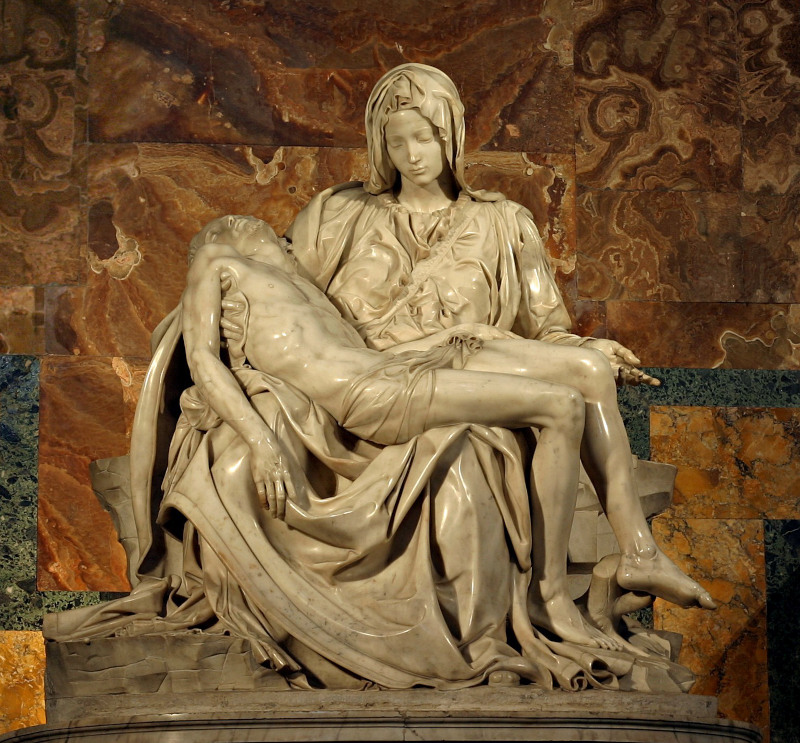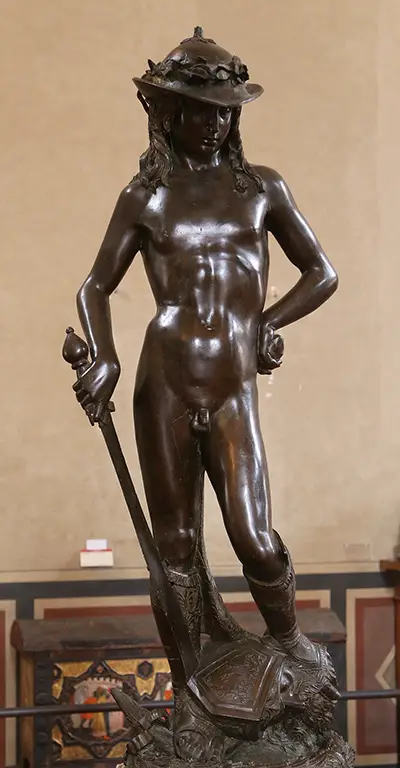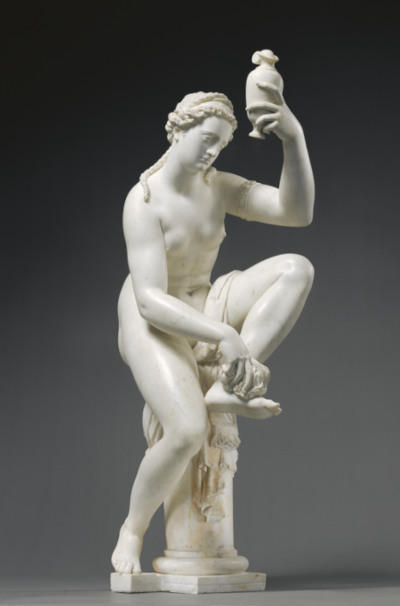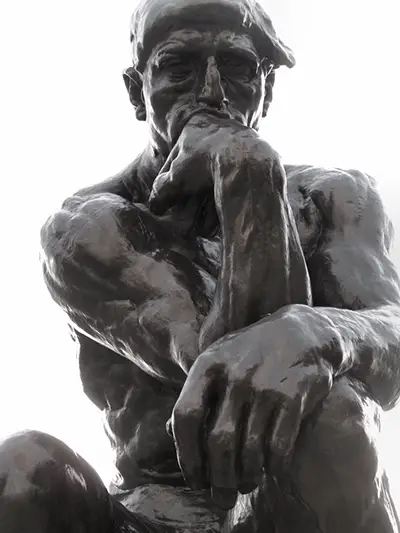Let's examine the most famous sculpture artists, going all the way back to the early Renaissance.
Introduction - Discover the role of Sculpture Artists in Art History
Sculpture has played a significant role in art history across many different civilizations, and was particularly important in the Italian Renaissance. In the modern era this format has been revitalised with all manner of innovations, some of which have taken advantage of modern technology.
Much of the sculpture with which we are familiar was influenced by classical art from Greek and Roman civilizations, but there was also much to enjoy from outside the European boundaries, including Asia and Africa. These have also influenced European artists, but those included in this article have been selected from a European standpoint.
List of Sculpture Artists
We have included a summary of the most famous, in our opinion, since the early Renaissance. There is an abundance of Italian artists in the earlier stages, but in more modern times we have seen a good number of famous sculptors appearing from the US, UK and elsewhere.
The list below covers the most famous sculpture artists in history, starting off with a selection of Renaissance artists. Some notable movements, such as Impressionism, will not be found here because of its concentration on other mediums, but there is still a wide variety of movements and styles covered, across a period of many centuries.
Michelangelo
Michelangelo is considered by many to be the most famous sculpture artist of all time. His David was particularly memorable and he was an artist who achieved extraordinary precision with his work which helped to raise the bar of Renaissance sculpture. Towards the end of his career there was an expressive style to his work, which helped to influence the next sculpture artists of the next few centuries.
The artist was a widely talented individual who would sketch beautiful drawings prior to commencing his sculptures. He had a great eye for detail and also spent many hours observing the smallest of details in the human anatomy in order to better understand its complex systems.
.jpg) Pieta by Michelangelo (Sculpture Artist)
Pieta by Michelangelo (Sculpture Artist)
Donatello
Donatello arrived relatively early, helping to influence other Italian Renaissance sculptors. He was part of the Italian studio system, where techniques would be passed from one generation to the next and his own body of work is dominated by figurative sculptures, including two of the David, in different mediums.
Donatello was famed for his ability to not only depict his subjects incredibly accurately, but also, in some cases, to deliver emotion within them too. He helped to revitalize European sculpture and to bring about an emergence of key contributors across the Renaissance era.
Andrea del Verrocchio
Andrea del Verrocchio was another multi-skilled Renaissance artist who was eventually persuaded against painting due to the success of one of his pupils, Leonardo. Verrocchio ran a highly successful studio and would eventually specialise in sculpture. He would produce his own impressive David, as well as a notable statue of Bartolomeo Colleoni.
His reptation was strong within his own lifetime, and he would enjoy some of the largest commissions going, despite the highly competitive nature of the art world in Italy at this time. His legacy remains heavily connected to the other famous sculptors that he taught through his studio.
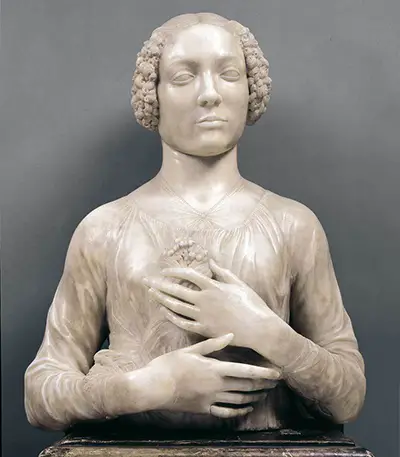 Lady with a Bouquet, Famous Sculpture Artist - Andrea del Verrocchio
Lady with a Bouquet, Famous Sculpture Artist - Andrea del Verrocchio
Luca della Robbia
Luca della Robbia was a delightful 15th century sculptor from Italy who specialised in terracotta statues, and was also famous for building up a formidable studio in which a large number of skilled assistants found employment. The vast majority of his work was completed in Florence, a city which became the centre of the Italian Renaissance.
As part of his studio, a number of family members would also learn from his innovations and continue the family name for several generations. They were also able to take advantage of the considerable number of connections that he had built up over the course of his career, which brought plenty of opportunities to members of his family.
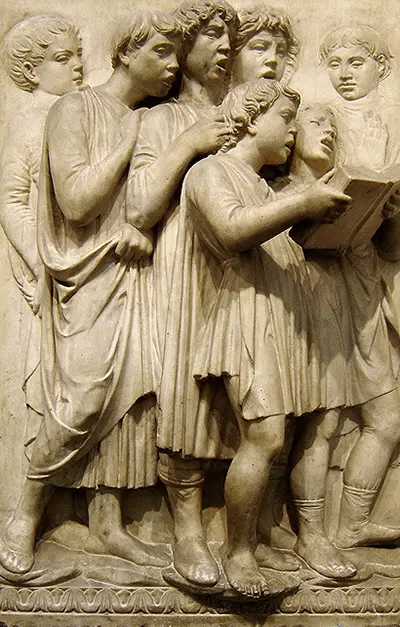 Luca della Robbia Renaissance Sculpture
Luca della Robbia Renaissance Sculpture
Lorenzo Ghiberti
Ghiberti was born in 14th century Florence and immediately set about contributing to the Renaissance era through a series of stunning sculptures. His work would feature the Life of Christ across his Gates of Paradise, and these remain some of the most famous examplse of Renaissance sculpture.
The artist possessed such incredible technical skill that he was able to obtain many of the highest profile commissions being offered in Florence at the time. His record of success gave his clients confidence in his work, even though some of his projects would overun. Quality was always at the forefront of his mind, and in those days, clients accepted delays so that the quality of the final work would not be jeoparised.
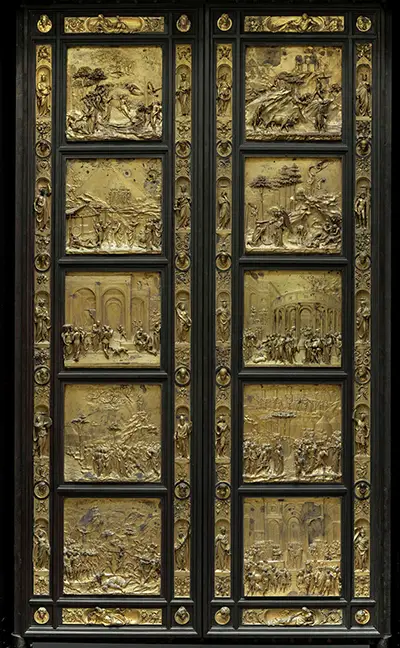 Gates of Paradise Lorenzo Ghiberti Sculptures, Life of Christ
Gates of Paradise Lorenzo Ghiberti Sculptures, Life of Christ
Gian Lorenzo Bernini
Gian Lorenzo Bernini achieved success as a painter and sculptor. He drew on inspirations from classical civilizations in many of his sculptures, and was a major figure within the Baroque movement. His talents as a sculptor were so impressive that inevitably he was drawn into architecture as well, allowing him to take on a variety of major commissions throughout the 17th century.
Ecstasy of Saint Teresa is perhaps his best known contribution, as well as Baldacchino in St. Peter's Basilica. His reputation spread beyond Italy, with many considering him to have been the finest European sculptor of the Baroque era.
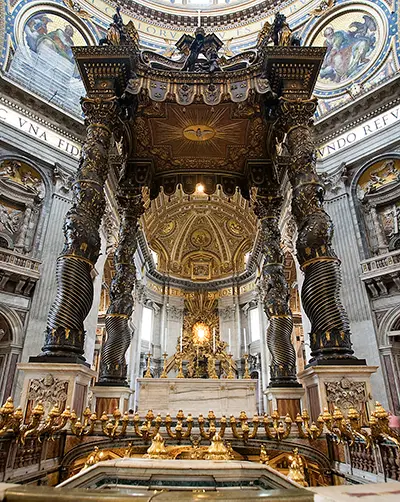 St Peter's Baldachin Gian Lorenzo Bernini
St Peter's Baldachin Gian Lorenzo Bernini
Giambologna
Giambologna was a Mannerist sculptor from Flanders, in a region which is now a part of France. His Italian-sounding name is perhaps because of his career mainly starring within Italy, where he studied and worked for much of his life. His Neptune in Bologna is perhaps the most impressive work from his oeuvre, and he was also a highly skilled draughtsman.
Whilst he may not be considered the most famous Renaissance sculptor, his role in the Mannerist era is signficant, and helped to bring the transition between the Renaissance and Baroque eras, whilst also having a background which included an understanding of Italian and Flemish art.
Antonio Canova
Antonio Canova was an Italian sculptor from the 18th century who worked in a Neoclassical style. His most famous creation would have to be Psyche Revived by Cupid's Kiss from 1787, and his work was unique in how it balanced a variety of past influences.
Italian art peaked during the Renaissance era, but with artists such as Canova and Bernini arriving some years later, it is clear that there was still plenty of creative invention continuing in the country even after the death of masters such as Raphael, Leonardo and Michelangelo.
.jpg) Venus and Adonis Antonio Canova (Famous Sculpture Artist)
Venus and Adonis Antonio Canova (Famous Sculpture Artist)
Bertel Thorvaldsen
Bertel Thorvaldsen was a Danish and Icelandic sculptor from the late 18th and early 19th century. He can be considered the most famous Scandinavian sculptor in history. He worked in a Neoclassical style, and worked predominantly in marble, with a museum having been set up in his name.
He was regarded as a hero in his native Denmark, and his reputation continues to be celebrated today all across Europe. Outside of the achievements of French and Italian sculptors, he can be considered one of the finest contributors and has helped to draw attention to north European sculpture.
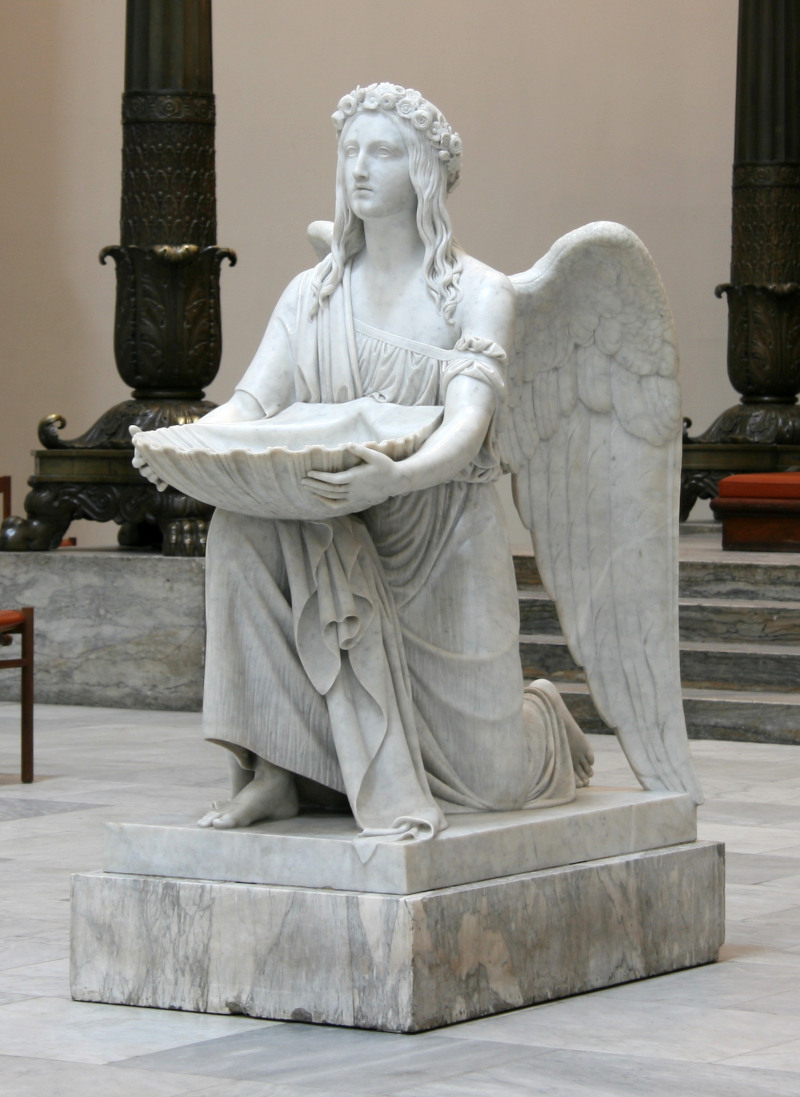 Marble Sculpture by Bertel Thorvaldsen
Marble Sculpture by Bertel Thorvaldsen
Jean-Baptiste Carpeaux
Jean-Baptiste Carpeaux was a talented 19th century French sculpture who is best remembered for the extraordinary detail that he put into many of his elaborate sculptures. He served under Napoleon III, whom he admired and produced a number of commissions for. Many of his decorative pieces would sit alongside fountains and other features based outdoors.
For this reason, many of his sculptures can be viewed by the public today without entering a museum or gallery. His connection to the ruling emperor also gives a further historical significance to his career, besides his oeuvre.
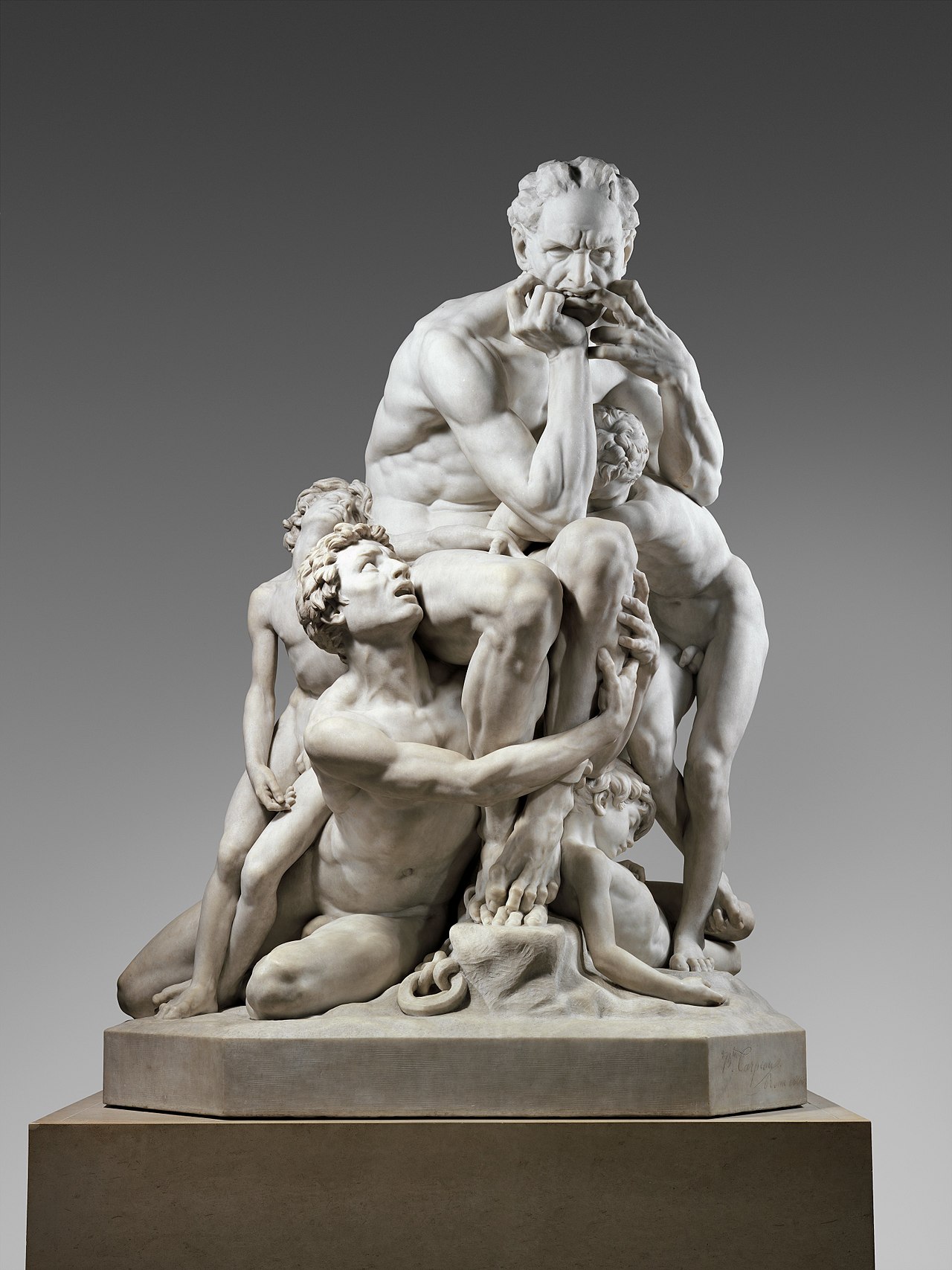 Ugolino and His Sons by Jean-Baptiste Carpeaux
Ugolino and His Sons by Jean-Baptiste Carpeaux
Constantin Brâncuși
Another great master of 20th century sculpture was Romanian artist, Constantin Brâncuși. His classic works included Sleeping Muse and The Kiss, with his style and medium varied. He was another member of the Modernism movement, and left a significant legacy, with his style still feeling somewhat contemporary, many years later.
Brâncuși studied in his native Romania before moving on to Germany and then France. It was in the latter that his career started to take off, and this was a country which already enjoyed a strong reputation with regards sculpture.
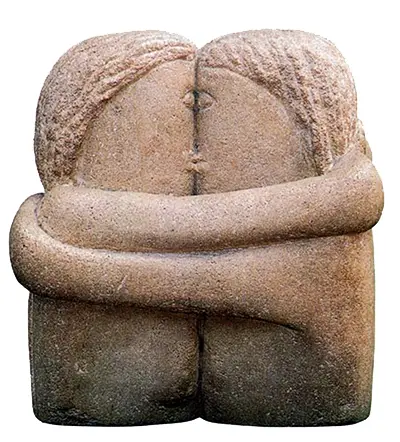 The Kiss by Constantin Brancusi
The Kiss by Constantin Brancusi
Auguste Rodin
Auguste Rodin was one of the most significant sculpture artists in this list, helping to bring about modern sculpture. A true master of the anatomy, his postures and poses were beautifully delivered and a result of years of practice, across multiple mediums. Rodin was also a gifted draughtsman and watercolor painter.
The Thinker, The Gates of Hell and The Burghers of Calais are amongst the artist's biggest achievements and can all be considered amongst the most famous French sculptures in history. His legacy remains strong today, and continues to influence all manner of modern artists.
Pablo Picasso
Picasso loved to try out new mediums and achieved success in all manner of different guises, including painting, sculpture and ceramics. He took in many influences, though African art was particularly noticeable and he admired traditional African sculpture. He also became a respected line artist, completing portraits with just a single, well crafted line.
Picasso was a truly contemporary artist, working in an abstract manner in some cases, even though he was trained in more traditional artistic techniques. Bright color was also prevalent in much of his work, and he even painted some of his sculptures and ceramics.
Henry Moore
Henry Moore was a significant English sculptor from the 20th century, best known for his abstract figurative bronze sculptures. Many of them can be found outdoors across the UK, such as in parks or other public spaces. He is much loved within the UK, and his style is considered highly contemporary.
The artist's approach is generally termed as Modernism, and he received rigorous training in a variety of mediums as a young man, through a number of respected art institutions. He helped to raise the profile of British sculpture in the 20th century, which was to become a formidable, if varied collection of artists.
Alexander Calder
Alexander Calder was an American 20th century sculptor whose large sculptures tend to be on display in outdoor locations. One of the unique characteristics of his creations is their ability to move in the wind, whilst the main structure remains in place.
Calder's creations often dwarf those who go to see them, and he wanted his audience to simply enjoy his creations without worrying too much about their meaning. His larger pieces followed smaller sculptures earlier in his career, and followed a similar approach in many ways.
Jeff Koons
Jeff Koons is an innovative sculptor from the US, best known for his Balloon Dog. His work was contemporary and creative, and most of his sculptures were small enough to install indoors. His reputation is strong, and many of his artworks are to be found in major national galleries and museums in the US, and elsewhere.
His style has suited modern audiences, and younger sculpture enthusiasts would find his work easier to connect to than more traditional artists such as the Italian Renaissance members listed earlier in this article.
Exploring the Diverse Styles of Sculpture Artists: From Classical to Contemporary
Sculpture, as an art form, has existed for many centuries. Its history can be categorised, at least from a European sculpture perspective, into several main categories, or periods, namely: classical, Renaissance, Baroque, Neoclassical and modern, contemporary sculpture.
These groups would influence all that followed, whilst adding their own innovations as brought about by the specific environment of the day. These categories focus only on European empires of the past, and, naturally, sculpture has evolved in other parts of the world too. Perhaps the most exciting alternatives have been found in Asia and Africa, where interest in their achievements continues to remain strong.
Classical sculpture is a term that related to all forms of sculpture derived from classical civilizations, namely the Greek and Roman empires of the past. Huge advancements in sculptural techniques were made in this time, with notable sculpture artists achieving fame for the first time. Phidias and Praxiteles are two examples of that, and extraordinary work was achieved despite relatively primitive tools being available at this time.
After classical sculpture was lost for a period, it would be revived during the Italian Renaissance, thanks to contributions by the likes of Michelangelo, Donatello and a number of significant Italian art schools. They added to what had gone before with a greater use of emotion in some cases, but also a more precise depiction of human anatomy, thanks to observation and practice. All that followed within European sculpture would be heavily impacted by the achievements of these great masters.
Gian Lorenzo Bernini spearheaded the Baroque sculpture movement and encouraged a drama and emotion which would move things on from the Renaissance. This style was brought into public squares, parks and other public areas, as well as indoors in large institutions. The public appreciated the exciting nature of this style, and it sat well against the Baroque paintings of the same period.
Neoclassical artists of the 18th and 19th century would return to ancient civilizations for their inspiration, in a similar manner to the Renaissance era. They wanted to avoid the extravagance of more recent movements, and promote sculpture artists who respected the original ideas of classical history and also displayed discipline and control within their work.
Modern and contemporary sculpture encouraged new ideas, and a rejection of the past. Avant-garde styles appeared, including kinetic methods, and almost every aspect of sculpture would be re-thought and re-invented. New technology also brought other opportunities and this evolution continues to occur today. Global barriers would also start to fall, with artists able to collaborate across borders.
The Creative Process of Sculpture Artists: From Concept to Completion
The are many phases involved in completing a sculpture, depending on the style of the sculptor. In the Renaissance era, sculptors would often produce small models in order to indicate how the final piece would look, in order to potentially acquire the commission. There will also be regularly sketching in order to better plan the final sculpture, and this has been a consistent approach throughout the ages.
Depending on the materials being used, the sculpture is then formed from processes such as carving, modeling, welding and casting. In some cases, it might be necessary to produce element separately, before assembling them together at a later date, particularly when constructing very large, outdoor sculptures. Installation can be a complex task, and customisation may be needed to the specific site.
Again, depending on the material, there may be an extended period of refinement, where an artist will examine the work and make suitable adjustments. In cases where assistants have been used, normally the less experienced sculptors will cover the menial tasks, before the leading name will take on the most significant parts - this was a common method found in the Renaissance, when the masters had large numbers of projects to complete, and needed help to meet these demands.
Sculpture Artists Who Made History: Examining their Significance in the Art World
Sculpture artists have produced many different meanings and messages within their work as well as having different styles to their statues and monuments. Rodin, for example, helped to provide a balance between the old and the new, helping to move us towards a more abstract form of sculpture, whilst respecting what had gone before. Others focused more on meaning, covered activist themes such as freedom and rights, and worrying less about the way in which they depicted these themes.
The three dimensional nature of sculpture has impacted visual arts such as painting and drawing. Some artists would improve their drawing skills by sketching sculptures from different angles. Cubism would attempt to cover three dimensional images within a two dimensional form by altering angles in an inventive manner. There was also a good number of artists who covered all of these disciplines within their career, and each would inevitably feed off each other.
In terms of exhibiting and displaying art, sculptures have helped curators to bring variety to a venue, breaking up endless hung paintings with something different. Additionally, they have been used to decorate grand gardens or religious buildings, fitting well alongside the architectural techniques of the day. Finally, sculpture can summarise the qualities and developed level of a civilization, helping to remind us of the qualities of ancient Rome and Greece.
Celebrating the Innovators: Sculpture Artists Who Pushed the Boundaries of their Craft
Sculpture has evolved for centuries, but there are some specific names who have helped to innovate the art form. Marcel Duchamp was highly unusual, bringing "readymades" into his work and presenting them as sculptures. This approach was controversial, but also memorable and helped to quickly mark him out as an avant-garde artist with a new way of thinking about this art form.
Alexander Calder was imaginative in his use of items floating and being impacted by the wind and air around them. This made his work unusual and also highly suitable to outdoor displays. Traditionally, sculptures would be carefully protected in enclosed environments, and were often much more fragile.
A number of artists would start to create sculptures from existing elements, and then combine them to form something new. Traditionally, sculptors would take uniform blocks of wood or stone and sculpt them by hand, where as this new approach made each creation entirely unique and impossible to replicate, as it relied on the randomness of the natural world. In some cases the items collated together would be related to a particular theme, and might include sand, tree bark, and small shells.
Interactive, huge sculptures also appeared during the 20th century and offered visitors the chance to walk through these creations. This would excite the audience, and children particularly would appreciate this style of sculpture. Such large sculptures were restricted in where they might be displayed, though, and might require maintenance from time to time.
Sculpture Art in Different Cultures: Discovering Artists from Around the Globe
Besides the incredible sculptures found in ancient Greece and Rome, as mentioned elsewhere in this article, it is worth also mentioning other cultures and the impact that they have also made. African sculpture is famed for its wooden carved sculpture featured elongated forms that may remind some of the Mannerist movement. They are known to have influenced European sculptors and painters, such as Pablo Picasso.
Chinese sculpture has a wealth of impressive artifacts, including huge buddhist figures as well as decorative terracotta trays and plates. This culture is amongst the oldest, and has achieved much in art, as well as invention, science and literature. Delving deeper into asian culture also uncovers indian temples and other places of worship.
The Maya, Aztec, and Inca cultures in the Pre-Columbian Americas also feature detailed and highly skilled sculptures, normally used as a means to celebrating the gods. They would be famed for their expressive nature and also the bright color tones that would be used in most cases.
Sculpture Artistry: Capturing Emotion and Meaning in Three-Dimensional Forms
The third dimension found with sculpture gives this art form a distinct advantage. Touch can be used to interact with sculptures, when they are prepared appropriately for this. Children can even climb upon certain installations or use them as a slide, in some cases. Traditional sculpture was not intended to be used in this manner, and was more about being observed from different angles.
The shapes of these designs can also interact with light, just as one would find with a sun dial. Wind can also play a part in moving certain elements around. Other art forms do not suit being displayed outdoors, which is why we have so many galleries and museums. There is also something truly real about seeing something physical that can be viewed from different angles, going beyond the impact of a painting.
Iconic Sculptures and the Artists Behind Them: Discovering Timeless Masterpieces
In order to illustrate some of the great work by sculpture artists over the past few centuries, we have included a list below of five of the most famous sculptures, with an explanation about their qualities, and the nature of their creators.
- Michelangelo's David -
- Auguste Rodin's The Thinker -
- Constantin Brancusi's Bird in Space -
- Louise Bourgeois' Maman -
- Alberto Giacometti's Walking Man -
The Enduring Influence of Sculpture Artists: How their Work Continues to Inspire Today
Sculpture artists continue to shape our culture, in a number of different ways. Social commentary attempts to bring a more progressive society to reality, whilst public spaces continue to be decorated and celebrated, bringing art to the masses in ways never seen before.
Technology also brings new opportunities, both in the way that sculpture can be created, but also in how it can be shared and enjoyed. The art world is more democratic and accessible thanks to these changes, and as technology advances further, there may be more exciting developments to come from AI and a further global spread of the internet.



